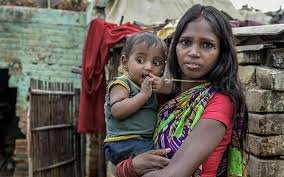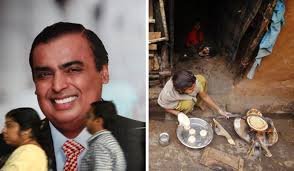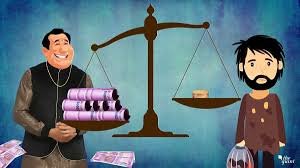India’s growing economic disparity is a pressing issue, with only 0.4% of the population considered rich. A complex web of factors, including economic inequality, job scarcity, an ineffective educational system, and governance challenges, continues to hinder financial prosperity for most Indians.

Economic Inequality: The Wealth Divide
While India is one of the world’s fastest-growing economies, it remains highly unequal. The wealthiest 10% of Indians control around 77% of the country’s wealth, leaving millions struggling with minimal income. For instance, in 2017, the poorest 670 million people in India saw just a 1% increase in wealth, while the affluent few accumulated significant riches. Crony capitalism and inherited wealth have further concentrated this wealth among a small elite.

Job Scarcity: A Looming Crisis
India’s job market is struggling to keep pace with the needs of its population. While the country requires around 20 million new jobs annually, it produces only 5 million, leaving many unemployed or underemployed. Youth unemployment is particularly concerning, with over 42% of individuals aged 20 to 24 unable to secure stable employment. Many are forced into low-paying informal jobs that offer little job security, further entrenching poverty.
Education System: The Skills Gap
India’s education system is another critical factor in the wealth divide. The current focus on rote learning often fails to equip students with practical skills needed for the job market. Graduates frequently find themselves unprepared, facing unemployment or low-wage jobs. The lack of emphasis on critical thinking, entrepreneurship, and relevant skills limits upward mobility and traps many in low-income roles.
Government Policies and Infrastructure
Despite government efforts to boost employment through initiatives like skill development programs and manufacturing incentives, these measures are often insufficient or poorly implemented. Bureaucratic hurdles and weak infrastructure also stifle the growth of small and medium enterprises, which could otherwise create jobs and stimulate economic growth.

India’s staggering economic inequality, coupled with job shortages, an ineffective education system, and inadequate government support, has left 99.6% of the population far from wealthy. Addressing these systemic issues will require comprehensive reforms to ensure economic growth benefits a broader society. Without these changes, the rich-poor divide in India will only continue to widen.


